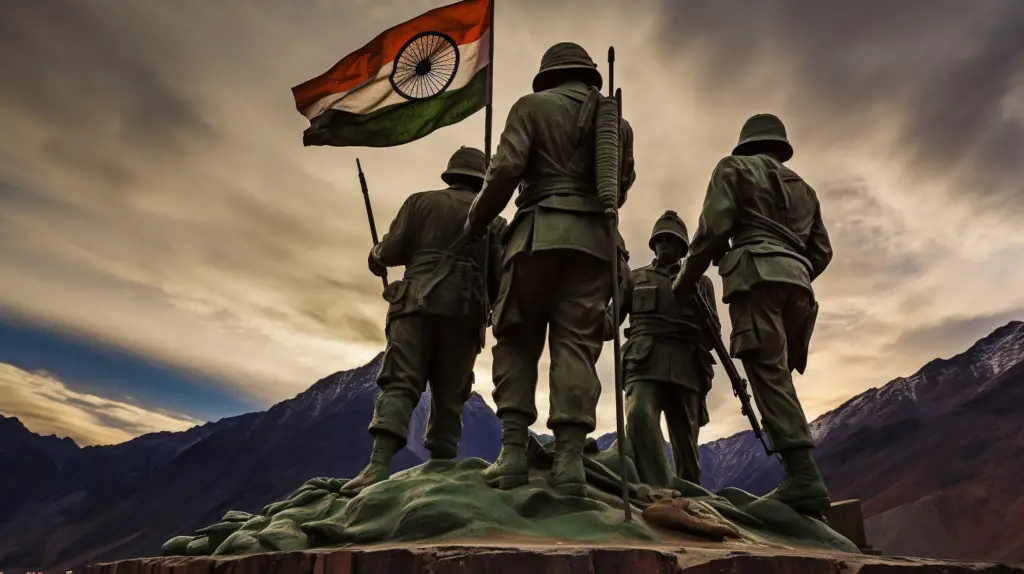Kargil Vijay Diwas, observed on July 26 every year, is a day of great national importance for India. The day is a commemoration of India’s decisive victory in the Kargil War against Pakistan, which took place in the high-altitude, rugged terrain of the Kargil district in Jammu and Kashmir in 1999. This day symbolizes India’s steadfastness in protecting its territories and salutes the indomitable spirit of the Indian armed forces. Despite being widely celebrated, the events leading to the war, the conduct of the war itself, and its aftermath have been embroiled in many controversies and debates.
In this article, we delve into 25 interesting and controversial facts about Kargil Vijay Diwas.
1. The war took place despite the signing of the Lahore Declaration by both India and Pakistan, promising to work towards peaceful bilateral relations, only a few months before the conflict broke out.
2. India’s intelligence agencies were widely criticized for failing to predict the infiltration and preemptive positioning of Pakistani soldiers and militants.
3. The war was named “Operation Vijay” by the Indian government, which is Hindi for “Victory”. The name implied India’s firm resolve to evict the infiltrators.
4. Controversy emerged around the role of international diplomacy during the war. The U.S. officially remained neutral but was accused by some of favoring Pakistan.
5. The Indian Air Force’s involvement in the war was named “Operation Safed Sagar” (White Sea). It was the first large-scale use of air power in the high altitudes of Jammu and Kashmir.
6. One of the greatest controversies was over the casualties. Pakistan acknowledged fewer than 500 deaths, while India stated that about 800 enemy soldiers had been killed.
7. The terrain and altitude of the battleground were as much an enemy to the Indian soldiers as the Pakistani troops. Soldiers had to fight in freezing temperatures and inhospitable terrain, making the victory even more commendable.
8. Pakistan initially denied any involvement in the conflict, stating that India was battling with “Kashmiri freedom fighters”. It later admitted to its role in the conflict, which drew international criticism.
9. The role of media during the Kargil War sparked controversy, as it was the first war broadcast live on television. While some praised the media’s role in boosting the morale of the nation, others criticized it for revealing too much strategic information.
10. India lost 527 soldiers in the war, a figure that sparked debates on the adequacy of equipment and preparation of troops for high-altitude warfare.
READ MORE: 25 Interesting Facts About Israel’s Prime Minister Benjamin Netanyahu
11. The Indian government faced criticism over the treatment of war widows and families of deceased soldiers, leading to significant policy changes.
12. Post-war, the Indian government initiated massive military and infrastructure upgrades in border areas, but critics argue that it took a conflict of such scale to trigger necessary action.
13. The release of the official Kargil Review Committee Report led to many controversies. The report highlighted significant intelligence failures, which resulted in changes in the Indian intelligence community.
14. The gallantry of Captain Vikram Batra, who was posthumously awarded the Param Vir Chakra, became a symbol of the war. His famous words “Yeh Dil Maange More!” became a rallying cry.
15. The role of women in the Kargil War, such as flight officer Gunjan Saxena, was highlighted and celebrated, bringing discussions about gender roles in the military to the forefront.
16. The Kargil war marked the first time Indian troops were officially recognized as having fought on Pakistani soil.
17. The Bofors FH-77B artillery gun played a crucial role in the war, which brought into focus the issue of India’s arms imports and dependency on foreign countries for critical military equipment.
18. Pakistan’s Prime Minister at the time, Nawaz Sharif, claimed he was kept in the dark about the operation by the military, highlighting civil-military tensions within Pakistan.
19. India’s decision to not cross the Line of Control (LoC) was both lauded for upholding international norms and criticized for being overly cautious.
20. The Kargil War was one of the few instances where an Indian Prime Minister (Atal Bihari Vajpayee) visited the battleground, a move that was widely debated.
21. The war led to an increase in the defense budget of India, which was controversial given the country’s vast social sector needs.
22. The war led to the landmark Agra Summit in 2001, aiming for peaceful resolution of the India-Pakistan conflict. However, the summit is considered a diplomatic failure.
23. The National War Memorial in New Delhi, inaugurated in 2019, has the names of all the soldiers who lost their lives in the Kargil War. However, there were debates on the significant budget allotted for its construction.
24. Some strategists argue that the war could have been avoided with more proactive diplomacy and peace-building efforts, pointing to it as a failure of diplomacy.
25. Despite the war, both countries have nuclear capabilities, raising the question of nuclear deterrence’s effectiveness, a topic of much global debate.
In conclusion, Kargil Vijay Diwas is not just a day of victory, but it also serves as a stark reminder of the cost of war, the importance of peace, and the need for constant vigilance. Each of these facts and controversies provides a lens through which to understand the complexities surrounding this historical event.



